Surya in Sanskrit means Sun; Namaskar means salutation. So, the literal translation is Sun Salutation.
What is a Sun Salutation?
Sun Salutation is a combination of several different poses into one dynamic sequence. Since it is a dynamic sequence, the entire body is warmed up during Sun Salutation. As such, Sun Salutation is essentially done at the beginning of the class itself. There are generally two types of sun salutation in the ashtanga system: Sun Salutation A and Sun Salutation B.
The main difference between these two is the number of poses. You can certainly assume that Sun Salutation B is more challenging than Sun Salutation A.
Sun Salutation can also be practiced in one longer sequence that involves repeating it 108 times. In Buddhism and Hinduism, the number 108 is defined as the number of unity; it is a very sacred number in the yoga tradition.
For example, previously, such long sets of 108 repetitions were practiced four times during the year. They were practiced during the transitions between seasons. Certainly, if you want to try to do 108 Sun Salutations, get ready for a lot of sweat, strength, and endurance.
In all salutations, it is important to harmonize your breath and movemoents while having a steady gaze. When it is synchronized, just performing this sequence will be like meditation. Everything will be in harmony.
Surya Namaskar B
Sun Salutation B is often practiced with Sun Surya Namaskar A in a typical ashtanga vinyasa class. However, this sequence itself separated from the ashtanga system over time and began to be practiced within other systems, either as part of the class itself (vinyasa yoga) or as a separate sequence (mainly at the beginning of the class, in order to warm up the body for the class itself).
It should certainly keep in mind that this sequence is still mostly practiced in ashtanga yoga, especially since it is more demanding than Sun Salutation A.
Sun Salutation B is considered the most demanding salutation. It is very important that the practitioner has a good focus both on breathing itself and on the very movement of his body and is able to engage the bandhas.
Both Sun Salutation A and B are characterized by staying at the end of the sequence in the downward-facing dog. In that pose, the practitioner stays for 5 inhalations and exhalations, i.e., counting is done by the instructor/teacher. After that, it moves to the final part.
The sequence itself begins with the standing mountain pose (Tadasana), and Sun Salutation B also ends with it. After the mountain pose, the practitioner goes to the chair pose (Utkatasana).
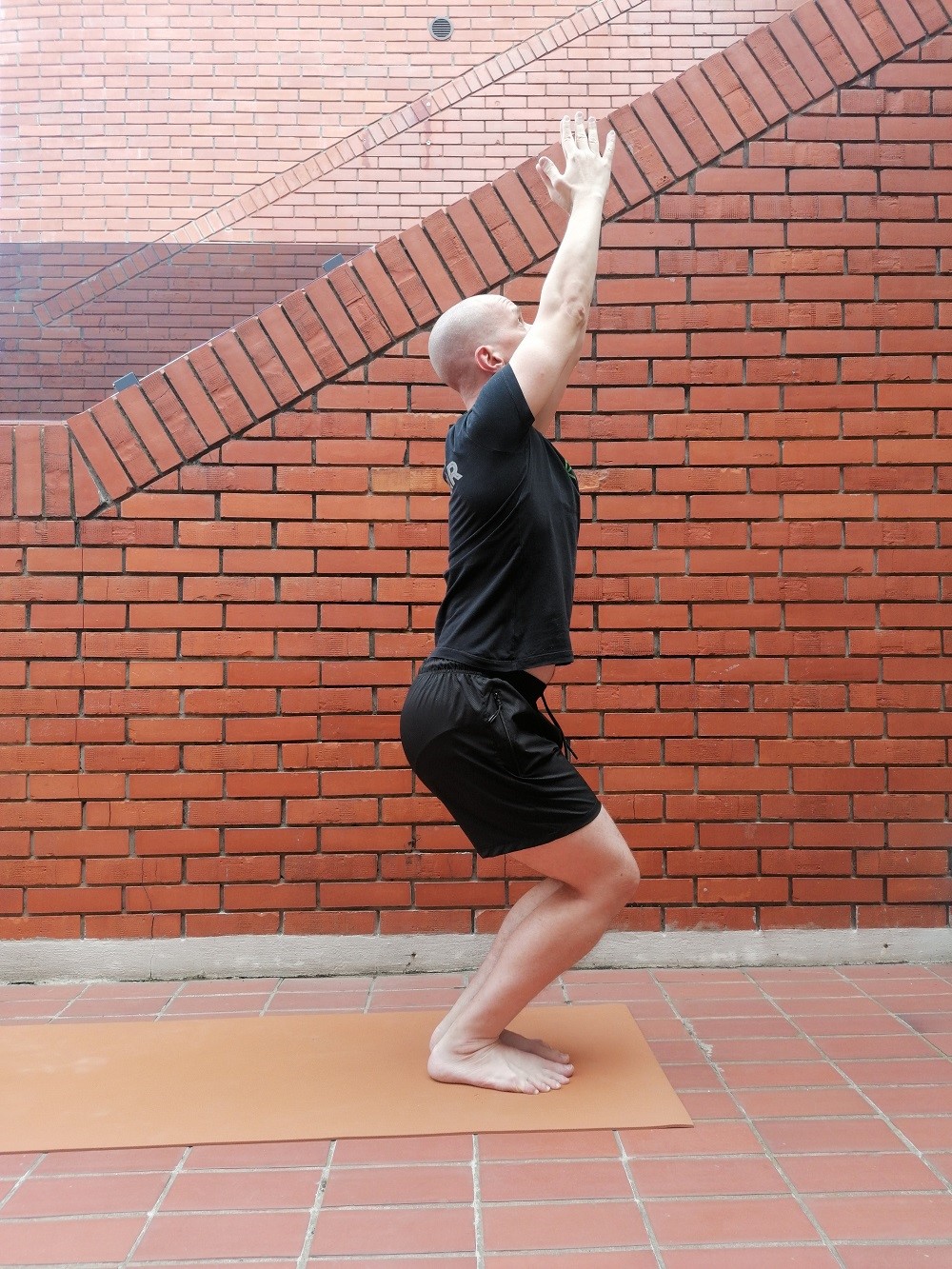
In the utkatasana position, the practitioner has a directed gaze towards the hands. It can be the tip of the nose, a look between the eyebrows, or a look in the direction of the navel. The downward Bend pose, Uttanasana, with the gaze to the tip of the nose follows the chair pose. From this pose, it continues into the forward stretch pose, Ardha Uttanasana, with the gaze to the tip of the nose.
In the chair pose, your legs are definitely slightly bent at the knees, while in the downward bending pose and in the forward stretching pose, if you cannot keep your legs fully extended, then bend them slightly. Certainly, in these two poses, there is a fine opening of your groin and stretching of your inner thighs.
From the forward stretching pose, there is a backward jump in chaturanga, Chaturanga Dandasana, with the gaze to the tip of the nose. Certainly, if you are at the beginning of your Sun Salutation B practice, feel free to step backward into chaturanga. If you practice jumping, definitely use bandhas. That way, you will have more control over the jump itself, and it will be more fluid.
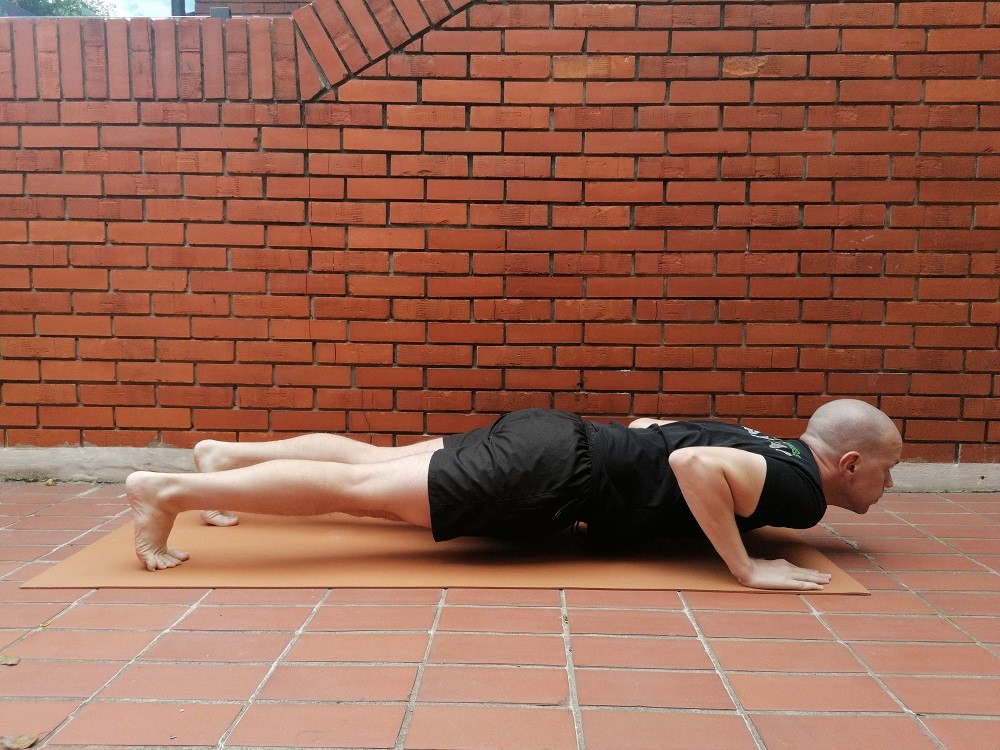
Each of these poses has its own gaze and inhalation or exhalation. More precisely, some poses are entered by inhaling, and others by exhaling. If an experienced instructor/teacher guides you through the sequence itself, then you have nothing to worry about. He or she will indicate to you the whole time during the sequence itself where the gaze is and where the inhalation and exhalation are.
From chaturanga, the practitioners move to upward facing dog, Urdhva Mukha Svanasana, with the gaze to the tip of the nose. From that pose, there is a fluid transition into the downward facing dog, Adho Mukha Svanasana, with the gaze to the navel. And this is where Sun Salutation A would end. Sun Salutation B continues to build from here.
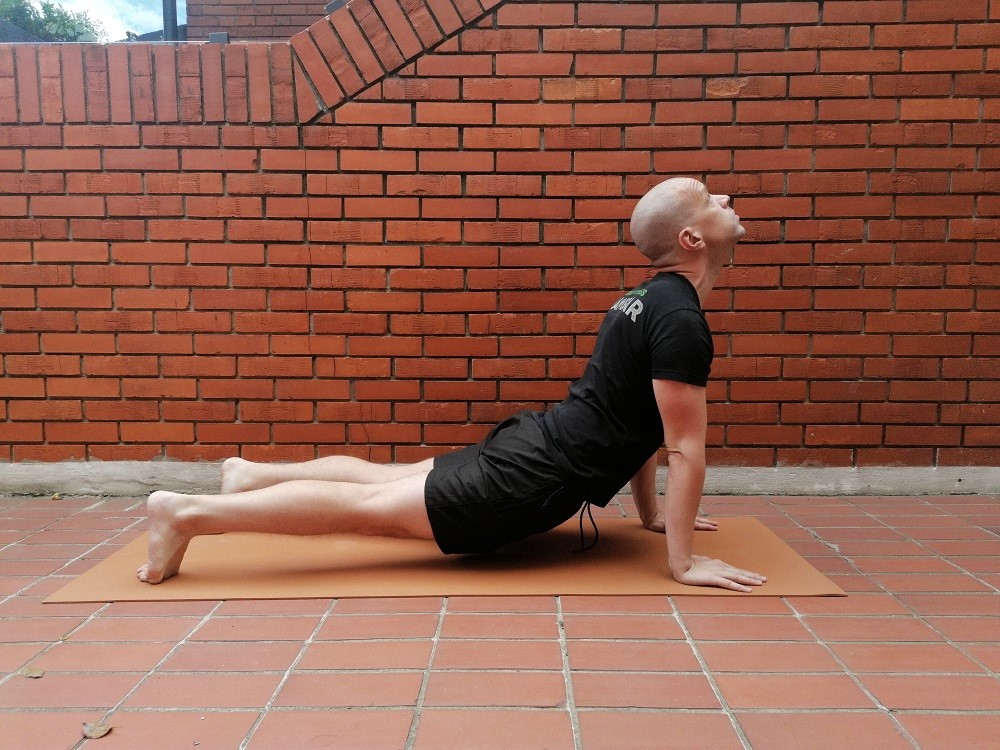
From the downward facing dog, step into Warrior 1, Virabhadrasana 1, with the gaze to the hands, for the right side. From this pose, you will go again into chaturanga. From chaturanga to the upward facing dog, which is fluidly connected to the downward facing dog. From the downward facing dog, you enter Warrior 1, but now for the left side. From this pose, you enter the chaturanga again.
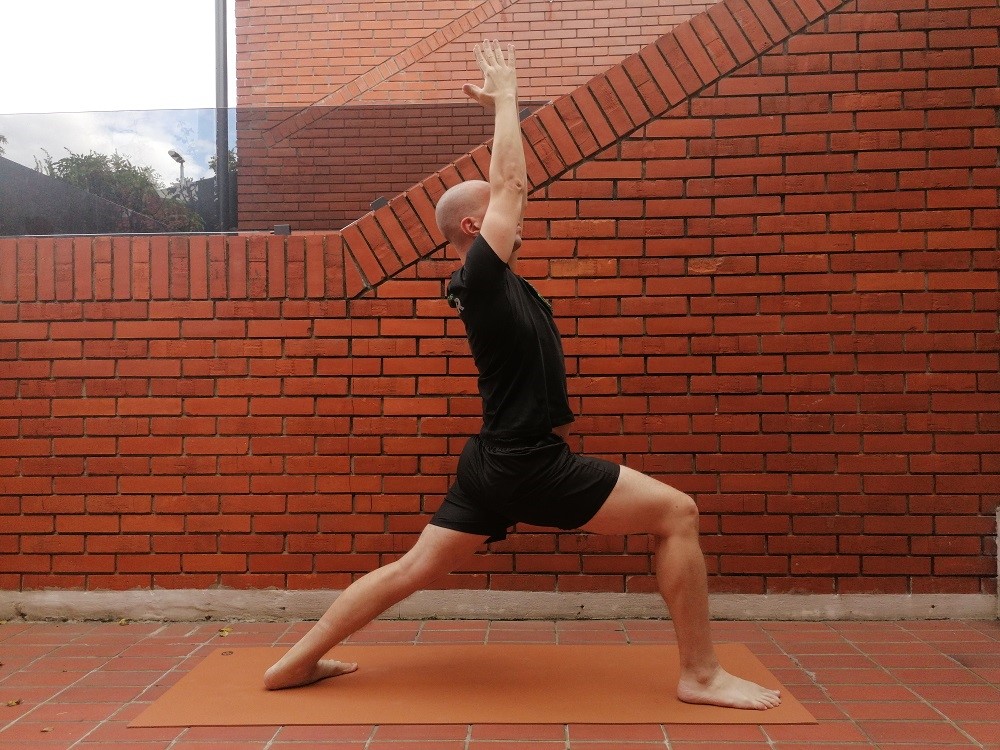
You can enter chaturanga by stepping backward if you can not jump. After chaturanga, you go into upward facing dog again, and after that, you go into the downward facing dog. You stay in this pose for 5 inhales and exhales.
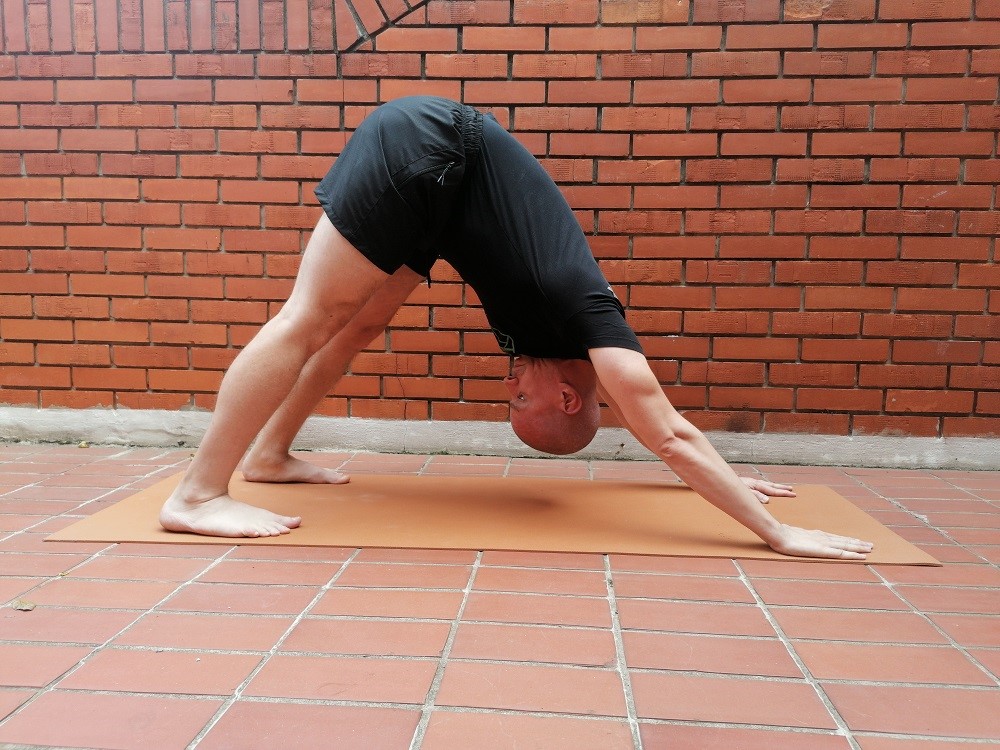
After 5 inhales and exhales, you can jump or step forward into a forward stretch pose. After that, you move into a downward bend pose in order to move from it into a chair pose and finish the whole sequence by entering into a mountain pose. Sun Salutation B is great for core strength and endurance. But, it’s also great for stretching your legs, stomach, spine, arms, and neck. This sequence affects increases body flexibility, improves the functioning of the entire cardiovascular system, has a positive effect on digestion, and leads to detoxification of the entire organism.
Conclusion
Sun Salutation B is the most demanding Sun Salutation. Therefore, if you haven’t practiced it yet, feel free to start first with Sun Salutation A. You should start from the basics. Build your Sun Salutations gradually.







